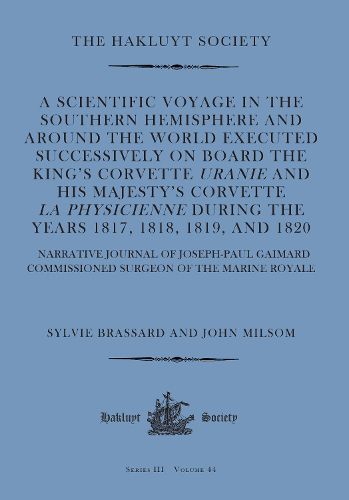Readings Newsletter
Become a Readings Member to make your shopping experience even easier.
Sign in or sign up for free!
You’re not far away from qualifying for FREE standard shipping within Australia
You’ve qualified for FREE standard shipping within Australia
The cart is loading…






The aims of the expedition of the French corvette Uranie, which left Toulon for a planned global circumnavigation in September 1817, were scientific. Gravity and magnetic fields were to be measured, natural history specimens were to be collected and primitive societies were to be studied. There were, however, no professional scientists on board. Instead, the ship's officers were made responsible for physical science and the medical staff for natural history. The junior surgeon, Joseph-Paul Gaimard, kept a diary in a large official notebook that had been issued to him. The first entries were of instructions and stores related to his medical duties and for his auxiliary role as a zoologist and anthropologist. The narrative section that follows, which ends with the vessel leaving Guam and headed for Hawaii, is a disordered but fascinating mix of straightforward accounts of events and medical interventions, lists of samples collected, results of measurements on peoples encountered and extracts from material located in colonial libraries.
$9.00 standard shipping within Australia
FREE standard shipping within Australia for orders over $100.00
Express & International shipping calculated at checkout
The aims of the expedition of the French corvette Uranie, which left Toulon for a planned global circumnavigation in September 1817, were scientific. Gravity and magnetic fields were to be measured, natural history specimens were to be collected and primitive societies were to be studied. There were, however, no professional scientists on board. Instead, the ship's officers were made responsible for physical science and the medical staff for natural history. The junior surgeon, Joseph-Paul Gaimard, kept a diary in a large official notebook that had been issued to him. The first entries were of instructions and stores related to his medical duties and for his auxiliary role as a zoologist and anthropologist. The narrative section that follows, which ends with the vessel leaving Guam and headed for Hawaii, is a disordered but fascinating mix of straightforward accounts of events and medical interventions, lists of samples collected, results of measurements on peoples encountered and extracts from material located in colonial libraries.